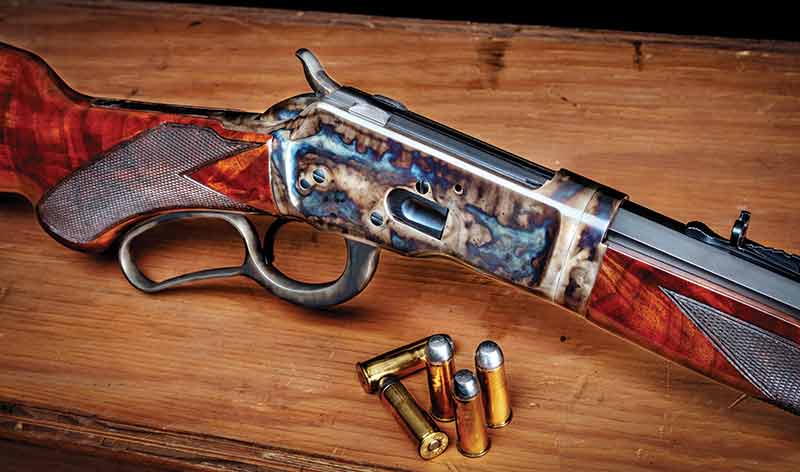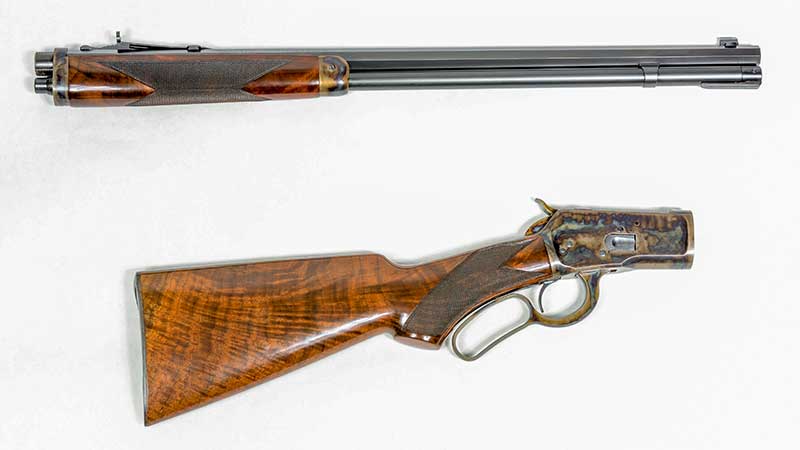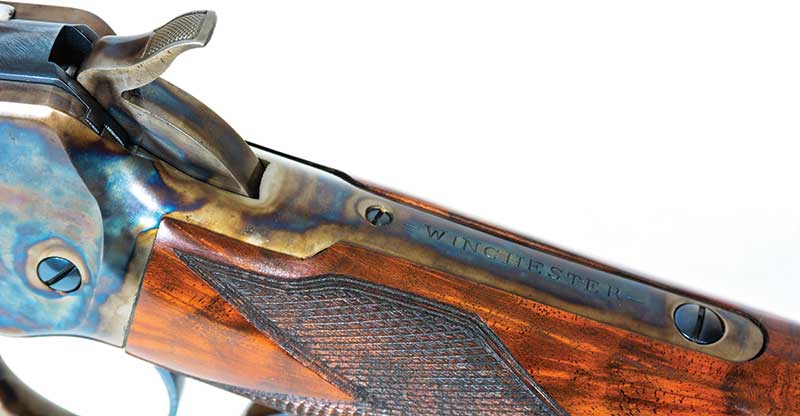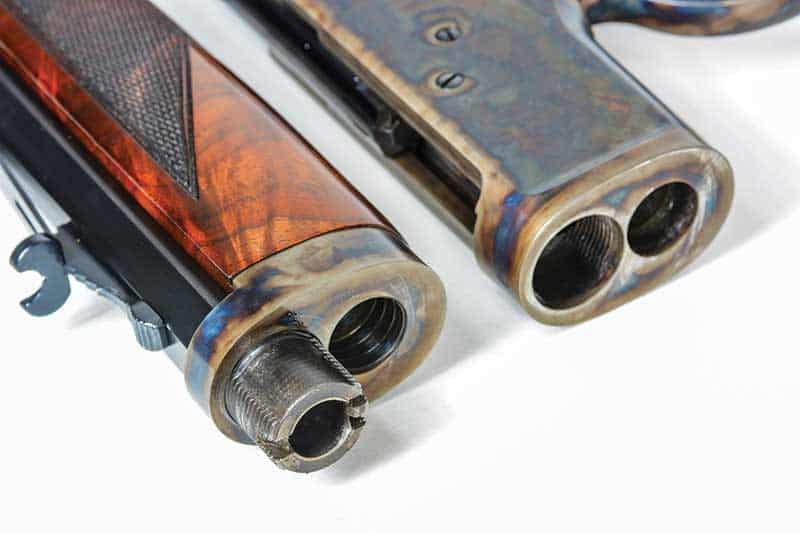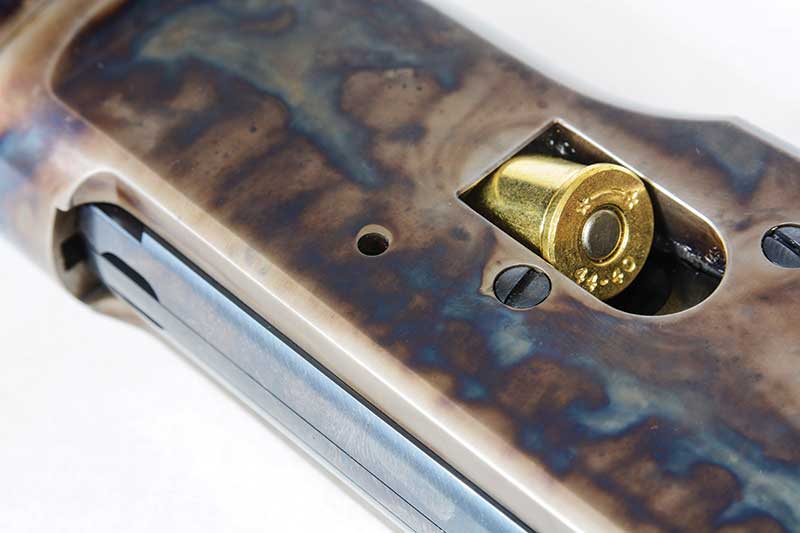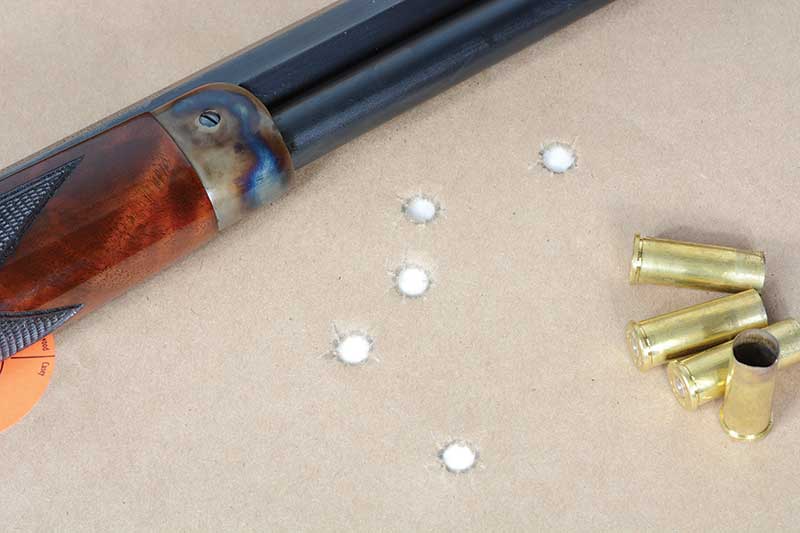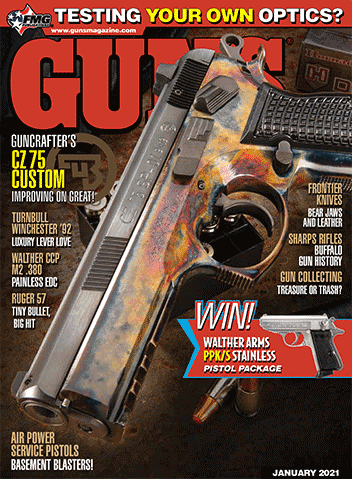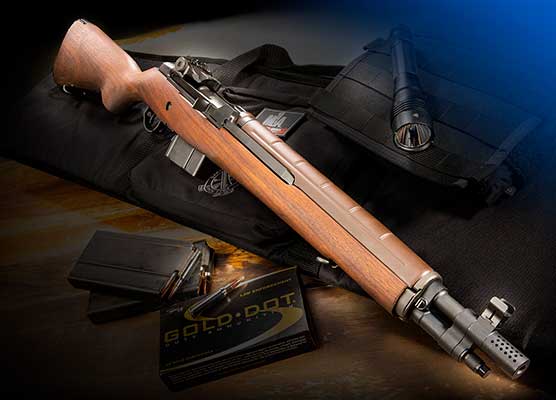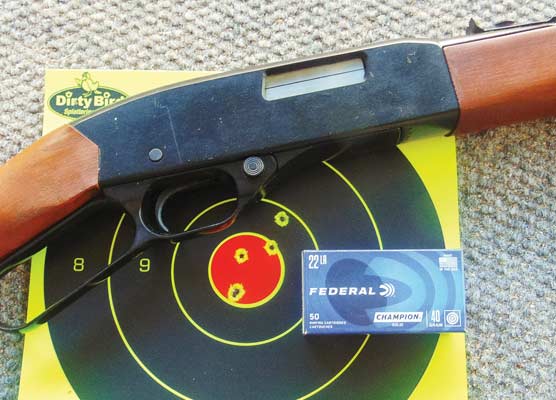Turnbull Restoration Winchester 1892 Deluxe Takedown
Better than you dare dream
The 1873 Winchester may be “The gun that won the West” but the Model 1892 is the Western levergun that won America’s heart. Yes, the ’73 came first, as did the buffalo-caliber 1886. True, its younger brother, the .30/30 model of 1894 has taken many a young man’s first deer and even has its own Mariachi song (look it up), but the lever-action 1892 is the uncredited hero in most of the Western movies we know. This makes it the levergun living in all of our memories — it was a ’92 Rooster Cogburn used to invite Ned Pepper to fill his hand, and anachronistically, introduced each episode of The Rifleman. It was, indeed, a ’92 that shot Liberty Valance.
Unsurprisingly for a rifle which has been around the better part of 130 years, many versions of the Winchester ’92 are available, including replicas by other makers but none quite match up to the Turnbull Restoration Company version. Available in limited numbers based on how many they are allotted by Winchester, the Turnbull gun starts as an in-the-white takedown rifle built to their own specifications.
Design history
There’s more than just nostalgia to the ’92. Like all of the lever guns designed by mechanical genius John Moses Browning, the 1892 has a certain timeless elegance. Born from Winchester’s desire for a stronger gun based on Browning’s ’86 to replace the aging ’73, it was also the subject of a bet between Browning and Winchester’s Vice President, resulting in Browning designing and delivering the gun in a scant 30 days. Almost half of it travel time between Winchester in New Haven, Conn. and Browning’s home in Ogden, Utah: a genius, indeed.
The largest caliber (and lightest) of the original ’92s, the .44-40 is its definitive chambering, with .45 Colt versions being only a recent invention. Like the ’73 before it, this gun matched cartridges with the Colt SAA, making the ’92 one of the original pistol caliber carbines.
The .44-40 follows the older convention of naming a cartridge by the caliber of the bullet and the charge of blackpowder propelling it. This was not Winchester’s original plan — like the .32-20 and .30-30, they originally named it after themselves as the .44 Winchester Center Fire (WCF) only to have this taxonomy overruled by the market and christened as the .44-40. Colt and Remington can sympathize: The .45, .380 and .25 Autos are all properly named Automatic Colt Pistol (ACP) and most people never knew the .44 Magnum was originally the .44 Remington Magnum. Such things happen when competitors start making ammo in your caliber.
Inspiration
One of the items in my library is a leather-bound reprint of Winchester’s 1916 salesman’s catalog. At $20 from Connecticut Shotgun, you should have one, too, if you like old Winchesters but I digress. The catalog includes a description of the Fancy Sporting Rifle variant of the ’92 and its specifications may very well be what Turnbull used as a starting point when they planned out this Deluxe version. Higher grade American walnut is used for the checkered pistol grip stock and it’s capped with a steel shotgun-style buttplate. The octagonal 24″ barrel is the only length barrel Winchester would then supply for a takedown ’92.
Available in either .44/40 or .45 Colt (a generous nod to those of us hopelessly enamored of the caliber, historicity or no), the stock is oil rubbed to the correct shade of red and metal components are given era-appropriate finishes.
Finishing First
I’m not sure you can overstate how good Doug Turnbull’s finishes are — he has devoted a large portion of his life to recreating the fine early finishes no longer suited to modern mass production. As I write this, I possess guns with Turnbull’s rust, nitre and charcoal bluing plus the bone charcoal color-case-hardening for which he is so justly famous. All different processes, all done beautifully.
On the Turnbull Deluxe ’92, the lever, hammer, receiver and forend tip are all color-case-hardened as is the steel buttplate. The barrel and mag tube are in rust blue which has a darker sheen than the charcoal (sometimes called carbonia) blue on the other parts. The front sight is from Marble’s and comes with a gold bead, which I deeply love. It is mated with a traditional buckhorn rear designed for both precise and up close, fast work depending on whether you settle the bead down in its lower pocket or just get the whole post in the wide, upper part of the rear sight. Think of it as the moral equivalent of today’s 1-4x optic because these were the serious combat weapons of the day.
A lightened mainspring makes the action easier to work and omitting the current tang safety makes sure the gun actually does work. While I am in support of things to make guns safer, the add-on tang safety found on some newer Winchesters has been justly maligned as it can actually keep the gun from firing at all. It’s happened to me. Leaving it off hews closer to the original lines of the ’92 and makes it more reliable. Apply the Four Safety Rules to all firearms and you’ll be fine.
Take It Down A Notch
This brings us to one my favorite parts: the takedown system. A surprising number of Winchesters — both shotguns like the 1897 and 1912, and rifles like the ’86, ’92, ’94 and ’95 — were designed for disassembly without tools using an ingenious system from Browning. The barrel was screwed into the receiver with interrupted threads and the magazine tube, which hung beneath the barrel in a ring of some sort, screwed into the receiver to keep everything in place. Flipping out a lever integrated into the muzzle end of the mag tube gave the shooter a handle to unscrew it, after which the barrel/magazine assembly could be rotated a quarter turn to free the barrel from its threads. It can be adjusted to take up slack as the system wears, so it always stays tight.
It is simple, brilliant and secure — secure enough the 1916 catalog warns prospective buyers they may have to hold the forend in their left hand and beat the receiver with their right to loosen it. This seems bad for the gun and worse for your hand so I’ll note I simply squeezed tighter and tried harder to get the Turnbull gun apart — and it was, as advertised, almost monolithically tight.
No Devil In The Details
These are the big features, but it really is the details making the gun. The trigger breaks crisply and the slight taper of the barrel, barely noticeable visually, makes the gun lively in the hand even though it’s long enough to hold a dozen cartridges full up. Similarly, the stock has a slight swell in the pistol grip I didn’t notice for weeks — I only noticed the rifle felt good.
Recoil is soft and the smoothness of the action makes it easy to run through a magazine surprisingly quickly. Using handloads with Starline brass and Hunter Supply bullets as well as loaded ammo from Black Hills, I easily went through some 600 rounds, and was able to shoot as tight as 2″ at 50 yards on paper, which is plenty good. This isn’t a precision rifle — it’s the rifle of our memories, executed better than we could have dreamed.
MSRP: $3,450
